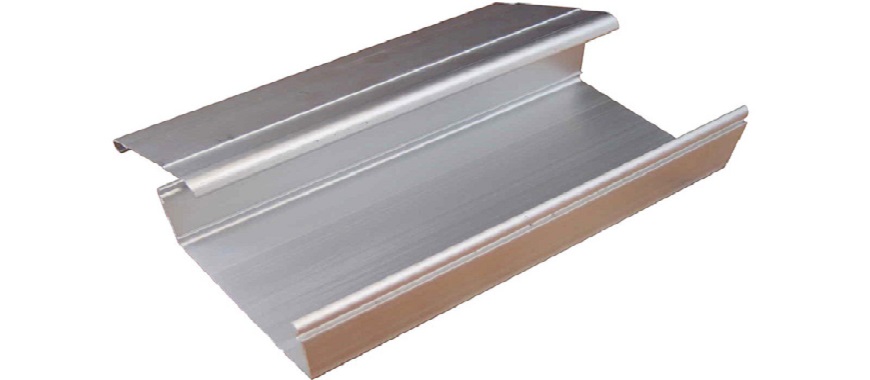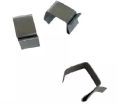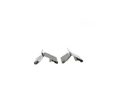
Cable tray detail refers to the comprehensive understanding and specifications of cable trays used in electrical systems. A cable tray is a structural framework designed to support insulated cables, ensuring safe and organized cable routing. It plays a critical role in cable management by preventing tangling, reducing physical and electrical damage, and providing easy access for maintenance. Cable tray detail is essential for selecting the right type of tray, whether perforated, wire mesh, or cable ladder, depending on the application and environment. By prioritizing cable tray detail in system design, installations can achieve enhanced safety, optimal performance, and long-term reliability in both industrial and commercial settings.
Choosing the Right Cable Tray for Your Needs: Detailed Cable Tray Detail
Selecting the right cable tray is essential for achieving efficient cable management. Proper selection ensures durability, safety, and optimal performance in diverse settings. Below, we explore key aspects of cable tray detail, including material, load capacity, and environmental suitability, to guide the selection process.
Comparing Options for Cable Trays
| Evaluation Factors | Aluminum Trays | Fiberglass-Reinforced Plastic (FRP) Trays | Stainless Steel Trays | GangLong Fiberglass Products |
|---|---|---|---|---|
| Material Features | Lightweight, easy to install | Lightweight, high strength, corrosion-resistant | High strength, heat-resistant, corrosion-resistant | High strength, durable, customizable for projects |
| Durability | Moderate, suitable for medium-corrosion environments | High, ideal for high-corrosion or humid environments | Very high, suitable for extreme conditions | Very high, tailored for demanding environments |
| Corrosion Resistance | Moderate, optional anodized coating | High, inherently corrosion-resistant | Excellent, superior corrosion resistance | Excellent, designed for harsh environments |
| Customization Options | Limited, standard designs available | High, easily customizable for unique layouts | Moderate, some customization possible | High, custom solutions available for specific needs |
| Protective Coating | Optional (e.g., anodized, powder-coated) | Typically not required due to inherent properties | Typically not required, but polish available | Typically not required, inherently resistant |
| Accessories Compatibility | Good, supports dividers, clamps | Excellent, compatible with multiple accessories | Good, standard accessory compatibility | Excellent, designed to integrate with project accessories |
Key Considerations: Material, Load Capacity, and Environment
Making the right choice of cable tray involves analyzing its material, capacity, and environmental factors. Important considerations include:
- selecting materials that align with specific application needs, such as non-conductive fiberglass for high-voltage areas or stainless steel for industrial durability
- verifying that the load capacity accommodates the total weight of the cables, avoiding overloading or sagging
- ensuring adequate ventilation through perforations or open designs to prevent overheating of cables
- accounting for environmental factors like UV exposure, chemicals, or moisture, and choosing trays with protective finishes
- consulting with GangLong Fiberglass for precise recommendations tailored to challenging operating conditions
Installation and Maintenance Tips for Cable Trays
Proper installation and maintenance of cable tray systems are crucial for extending their lifespan and ensuring operational safety. Implementing a structured approach can prevent potential issues.
Ensuring Proper Grounding and Support
Grounding and support are critical for the safety and effectiveness of cable trays. Key practices include:
- using bonding lugs and grounding clamps to establish a reliable electrical connection across the tray system
- reinforcing supports with brackets and fasteners that are compatible with the tray material and load requirements
- securely attaching trays to walls or ceilings, ensuring alignment with installation standards
- regularly inspecting grounding connections to identify and resolve any potential hazards
- partnering with GangLong Fiberglass to ensure access to high-quality grounding accessories
Regular Inspection for Wear and Secure Connections
Routine inspections are necessary to maintain the integrity of cable trays. Recommended steps include:
- checking for physical damage, such as corrosion or structural deformities, that may compromise the tray’s performance
- ensuring all fasteners, joints, and brackets remain securely tightened to prevent shifting or misalignment
- inspecting cables for signs of wear, overheating, or improper placement within the tray system
- cleaning the tray and associated components to remove debris that could obstruct airflow or affect durability
- promptly replacing damaged components with products from GangLong Fiberglass to maintain reliability
Applications of Cable Tray Detail Across Industries
Cable tray systems are integral to operations across various sectors. Their adaptability and efficiency make them essential for diverse industrial and commercial needs.
Industrial and Manufacturing Environments
Cable tray systems in industrial settings provide reliable support and organization for power and control cables. Their applications include:
- routing high-voltage power lines in manufacturing facilities to ensure safety and efficiency
- providing structural support for cables exposed to mechanical stress or vibration
- enabling flexible configurations that adapt to changes in production layouts
- ensuring resistance to environmental challenges such as heat, moisture, or chemicals
- allowing easy access to cables for maintenance or system upgrades
Telecommunications and Data Centers
In telecommunications and IT environments, cable tray systems facilitate organized cable management for power and data systems. Their uses include:
- optimizing cable arrangement to improve airflow and cooling efficiency in data centers
- minimizing electromagnetic interference to maintain stable network operations
- providing scalable solutions for growing infrastructure needs in high-density installations
- protecting communication cables from physical damage or interference
- supporting modular configurations to accommodate frequent equipment upgrades
Renewable Energy and Utilities
In renewable energy projects, cable tray systems are essential for managing power distribution. Their roles include:
- grounding and organizing cables for solar panel arrays, wind turbines, and hybrid energy systems
- ensuring resilience against environmental factors such as UV exposure, rain, or extreme temperatures
- reducing installation time through pre-configured modular systems
- supporting large-scale utility projects with durable materials designed for heavy-duty use
- promoting sustainability with recyclable materials provided by GangLong Fiberglass
Commercial and Healthcare Applications
Cable tray systems in commercial and healthcare settings provide safe and organized solutions for complex installations. Their applications include:
- ensuring clean and efficient cable management in offices, retail spaces, and healthcare facilities
- routing power and data cables for medical equipment, improving operational reliability
- supporting flexible configurations for evolving workspace or healthcare layouts
- enhancing safety in high-traffic areas by keeping cables off the floor and securely routed
- meeting stringent safety and performance standards required in sensitive environments
What Are the Key Types of Cable Tray Detail
Understanding the various types of cable trays and their features is crucial for selecting the right system for a project. Each design caters to specific environments, cable management needs, and load requirements. Below, we explore key cable tray detail types to help determine the best choice for your application.
Perforated Cable Tray: Ideal for Ventilation and Lightweight Cable Support
The perforated cable tray is a versatile solution commonly used in commercial and industrial environments. Its unique design offers several benefits:
- providing excellent ventilation for cables, reducing the risk of overheating during operation
- supporting lightweight cables, such as communication and data cables, with an efficient design
- offering easy adaptability with multiple entry and exit points for cables, simplifying installation
- reducing maintenance requirements with pre-drilled holes for drainage and cable securing options
- being available in various materials, including galvanized steel and aluminum, to suit environmental needs
Wire Mesh Cable Tray: Flexible and Quick to Install
Wire mesh cable trays are widely appreciated for their adaptability and ease of installation. Key advantages include:
- offering a lightweight yet durable design, making them easy to handle during installation
- being highly flexible, allowing for customized routing around obstacles or in confined spaces
- supporting various cable types, including power, data, and fiber optics, in one organized system
- featuring an open structure that allows for optimal airflow, minimizing the chance of cable overheating
- ensuring quick adjustments or expansions as needs evolve, reducing downtime during upgrades
Cable Ladder: Designed for Heavy-Duty Applications
Cable ladders are built to support substantial loads, making them suitable for industrial and heavy-duty applications. Key features include:
- providing exceptional load-bearing capacity for power cables and bundled cable systems
- offering superior structural strength, ensuring durability in demanding environments such as factories and plants
- facilitating long runs of cable with minimal intermediate support, reducing installation time and cost
- enabling easy access to cables for inspection, maintenance, or replacement
- being available in corrosion-resistant materials to ensure long-term reliability in harsh conditions
Exploring Ezystrut Cable Tray Solutions with Detailed Insights
Ezystrut cable tray solutions are recognized for their reliability and adaptability in commercial and industrial applications. Exploring their key features and options highlights their suitability for diverse cable management needs.
Features of Ezystrut’s Perforated and High-Sided Trays
Ezystrut’s perforated and high-sided cable trays provide practical solutions for various environments. Notable features include:
- offering robust support for lightweight and medium-duty cables with high-quality perforated designs
- ensuring superior cable protection with high-sided trays, which prevent cables from slipping out
- featuring pre-punched holes to simplify installation and minimize preparation time
- providing multiple sizes and material options to match specific application requirements
- offering corrosion-resistant finishes for enhanced durability in challenging environments
Versatile Design Options for Commercial and Industrial Use
Ezystrut’s cable tray systems are designed to accommodate a wide range of applications. Their versatile designs include:
- providing modular systems that allow for customization and easy integration into complex setups
- supporting both horizontal and vertical installations with specialized brackets and fittings
- ensuring compatibility with additional accessories, such as dividers and covers, to enhance functionality
- offering sleek designs suitable for commercial environments where aesthetics are important
- ensuring compliance with industry safety and performance standards to meet diverse project requirements
Installation Tips for a Durable Cable Tray Detail System
Proper installation ensures that a cable tray system performs reliably over its lifespan. Below are essential tips for installing cable trays effectively.
Ensuring Proper Alignment and Support
Aligning and supporting cable trays correctly during installation prevents future issues. Best practices include:
- securing the tray on stable supports that can bear the load without bending or sagging
- using level brackets and hangers to maintain a uniform structure across the tray system
- accounting for thermal expansion and contraction by incorporating expansion joints in the design
- spacing supports appropriately based on the tray type and load capacity to avoid overloading sections
- consulting with GangLong Fiberglass to ensure the tray system aligns with operational requirements
Incorporating Grounding and Bonding for Safety
Grounding and bonding are critical aspects of cable tray installation. Recommendations include:
- using bonding lugs to ensure electrical continuity across interconnected cable tray sections
- verifying that grounding connections comply with safety regulations to prevent electrical hazards
- installing grounding clamps at regular intervals to maintain a secure connection to the earthing system
- conducting a post-installation inspection to ensure all grounding components are properly secured
- consulting GangLong Fiberglass for tailored grounding solutions suited to specific tray systems
How to Choose the Right Double Layer Cable Tray
Maintenance Guidelines for Sustaining a Cable Tray System
Regular maintenance is essential to keep cable trays functioning effectively and safely over time. Below are detailed guidelines for sustaining a cable tray detail system.
Performing Routine Inspections
Routine inspections identify potential issues early, ensuring the system remains safe and reliable. Steps include:
- checking for physical damage, such as cracks or corrosion, that could compromise structural integrity
- inspecting cable placement to confirm they are secure and free from excess tension or bending
- cleaning trays and accessories to remove dust or debris that could obstruct airflow or cause wear
- verifying that all fasteners and brackets are intact and tightened to prevent shifting or sagging
- documenting inspections to track system health and maintenance needs
Upgrading Components for Improved Performance
Upgrading components of a cable tray system can enhance its performance and extend its lifespan. Key options include:
- replacing worn or damaged trays with updated versions made from corrosion-resistant materials
- integrating advanced accessories, such as dividers or cable retainers, to improve organization
- upgrading to fire-retardant materials for trays used in high-risk environments
- expanding the system with modular additions to accommodate growing cable requirements
- consulting GangLong Fiberglass for expert advice on selecting and implementing upgrades
Cable Tray Clearance Requirements NEC for Safe Installations
Applications of Cable Tray Detail Across Industries
Cable tray systems are integral to diverse industries due to their adaptability and efficiency. Below are detailed applications highlighting their value.
Industrial and Manufacturing Facilities
In industrial settings, cable trays provide essential support for power and control cables. Their uses include:
- routing high-capacity power cables safely in manufacturing facilities
- ensuring cable organization and protection in environments exposed to chemicals or mechanical stress
- supporting modular production systems that require frequent reconfiguration
- facilitating maintenance and upgrades by providing easy cable access
- reducing the risk of electrical hazards in high-voltage installations
Commercial and Office Spaces
Cable tray systems ensure clean and organized cable management in commercial spaces. Applications include:
- routing power and network cables in office buildings to maintain a tidy appearance
- enabling flexible layouts that adapt to changing workspace needs
- protecting cables in high-traffic areas, such as retail environments or conference centers
- supporting audiovisual systems in meeting rooms or event spaces
- enhancing overall safety by preventing trip hazards and electrical risks
Renewable Energy Projects
In renewable energy installations, cable trays support complex power distribution networks. Their roles include:
- grounding and routing cables for solar farms and wind energy systems
- withstanding outdoor conditions like UV exposure, moisture, and extreme temperatures
- providing scalable solutions for expanding renewable energy projects
- enabling efficient connections between energy generation and storage systems
- promoting sustainability through the use of recyclable materials from GangLong Fiberglass
Organize Your Cables Efficiently with Small Cable Tray
FAQs about Cable Tray Detail
Cables should be placed in a cable tray following specific guidelines to ensure safety, performance, and accessibility. Power and data cables must be segregated to prevent electromagnetic interference (EMI). Heavier cables should be laid first, closest to the tray bottom, to avoid crushing lighter cables. When installing, ensure cables are not tightly bundled, as this can lead to overheating. Adequate spacing should be maintained between cables for ventilation and to allow for future adjustments. Additionally, cables should be secured using appropriate fasteners or ties at regular intervals to prevent movement. It is important to follow standards like NEC or IEC, which often specify installation practices, including grounding, tray fill limits, and spacing, ensuring long-term system reliability and safety.
Calculating the size of a cable tray involves understanding the cable load requirements and ensuring compliance with industry standards. Begin by determining the total number and types of cables to be installed. Calculate the combined cross-sectional area of the cables and account for a safety margin, typically 20-30% additional space, to allow for future expansions. Divide this total by the tray’s width to find the required depth. Refer to NEC or IEC standards for tray fill limits, which specify the maximum allowable fill percentage based on the tray type. Additionally, consider environmental factors like heat dissipation, weight capacity, and support intervals. Consulting the manufacturer’s specifications can also help determine the appropriate tray size for your specific application. Properly sized cable trays ensure efficient cable management and system reliability.
The three primary types of cable trays are:
Ladder Cable Tray: This type features two side rails connected by rungs, resembling a ladder. It provides excellent ventilation and is ideal for heavy-duty applications with high cable loads.
Perforated Cable Tray: Made of a solid bottom with perforations, this tray supports lighter cables and allows limited ventilation while protecting cables from external elements.
Wire Mesh Cable Tray: Constructed from wire mesh, it is lightweight and flexible, making it suitable for installations requiring quick adjustments or cooling, such as data centers.
Each type serves distinct purposes and is selected based on factors like cable type, environment, and load requirements. By understanding these differences, you can choose the most appropriate tray for your project’s needs.

As the editor of GangLong Fiberglass, I have years of experience and in-depth research, focusing on cable tray products, fiberglass solutions, and grille systems. I incorporate years of industry insights and practical experience into every content, committed to promoting the progress of the industry. At GangLong Fiberglass, my commitment is reflected in every product, from innovative cable trays to durable fiberglass solutions and sturdy grille systems. As an authoritative voice in the industry, my goal is to provide valuable information to professionals and businesses and promote forward-looking solutions.


